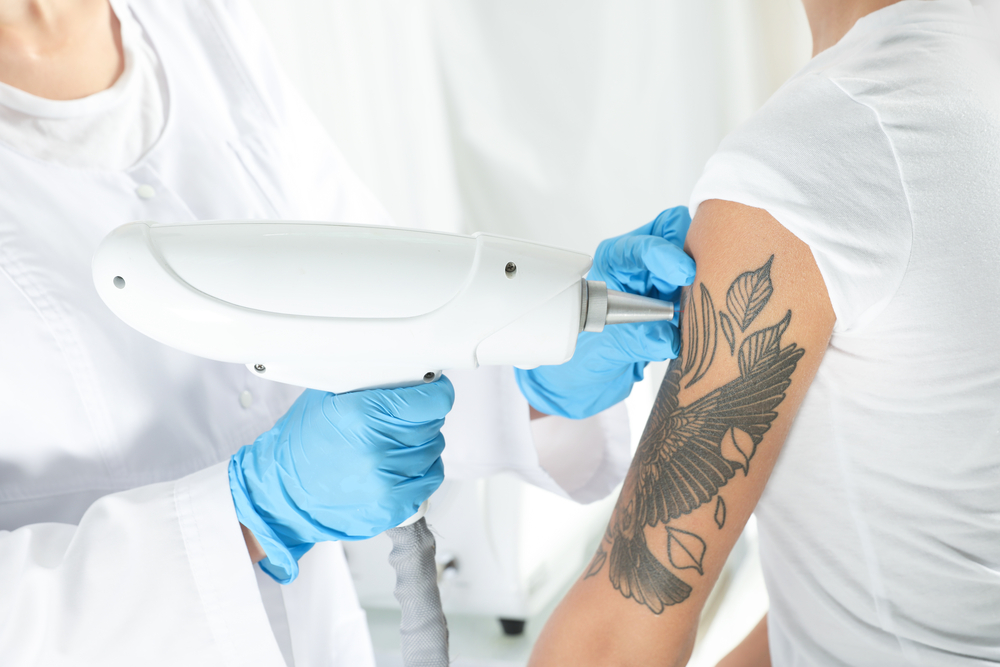Red light therapy, a popular treatment for pain relief and various skin conditions, has recently sparked curiosity among the tattooed community. Does red light therapy affect tattoos? The question is being asked increasingly. If you’re a tattoo enthusiast, you might have reservations about the possibility of this therapy fading your treasured body art.
In this article, we aim to address these concerns, exploring topics like the impact of red light therapy on tattoos, its influence on tattoo longevity, and if it can potentially alter your tattoo’s vibrancy and pigment.
By understanding the relationship between tattoos and red light therapy, you’ll be better equipped to decide if this treatment is right for you. Let’s dive in and uncover the effects of red light therapy on your tattoos.
Will Red Light Therapy Fade Tattoos?
When considering the effects of this red light therapy on tattoos, it’s important to understand the impact that RLT has on tattoos.
From a technical perspective, the absorption of light energy is highly dependent on the color and chemical composition of the tattoo ink. Iron oxides in the black pigment of tattoos, for instance, can absorb more light, leading to heating in those areas during the therapy sessions. In some cases, this has caused temporary skin reactions like blisters, primarily in tattoos with black ink.
However, it’s crucial to note that these instances are relatively rare and don’t suggest that red light therapy removes or fades tattoo pigments. The majority of individuals undergoing red light therapy have not reported significant changes in their tattoo pigment or appearance, suggesting that red light therapy’s effect on tattoo pigment is minimal.
In summary, based on current knowledge and reported experiences, red light therapy does not appear to significantly fade tattoos or disrupt tattoo longevity.
The Impact of Red Light Therapy on Tattoos
Difference between laser and red light therapy
First, we must distinguish and say that red led light therapy is different from laser therapy. Red light therapy uses a safe, non-invasive way to treat your skin, rejuvenating it. It is widely used to treat facial wrinkles, acne, and other skin-related conditions.
On the other hand, laser therapy is also used for treating certain skin conditions, but unlike red light therapy, it can be pretty invasive and painful. Laser therapy also treats conditions in a small narrow space, while red light therapy treats a larger area.
Laser therapy takes too long to recover from, while red light therapy is a relatively painless and quick procedure.
Usage of red light therapy after a tattoo removal process
On the other hand, red light therapy can be used after removing the tattoo with a special laser treatment.
Laser therapy uses highly-concentrated pulse beams with a length of a nanosecond. This firing creates a lot of friction that causes heat, and the heat causes tissue damage as a side effect. The trick is not to add gasoline to the fire, that is, not to undergo red light treatment immediately after the laser to remove the tattoo.
Instead, the best thing would be to wait for at least a week so that the place where the tattoo was settled a bit. Then, red light treatment can be applied to speed up the healing process and stimulate the body to remove any residual ink left behind even more efficiently.
Whatever the case, the body has a way of healing itself effectively, no matter the injury. Adding red light therapy to that process will make it quicker and more effective.

Source: serenaclinic.com
Conclusion
We hope you found the answer to whether or not red light therapy fades tattoos. We did our best to make this article as informative as possible, trying to answer your inquiry about whether or not will red light therapy fade tattoos. Even though it was difficult, we think we found just the right information for you.

Hello! I’m Nicky Rodgers.
Almost a decade ago, I got excited about the idea of employing alternative methods like red light therapy to create a healthier life.
To learn more about it, I did my Certified Light Therapist course from Photonic Therapy Institute and started looking into the intricacies of how light therapy influences several bodily processes. Before I knew it, my interest had become an obsession which resulted in this extensive blog.
Here, I offer countless well-researched articles to help you understand the benefits and uses of light therapy. I hope this information gives you a head start in your wellness journey.
